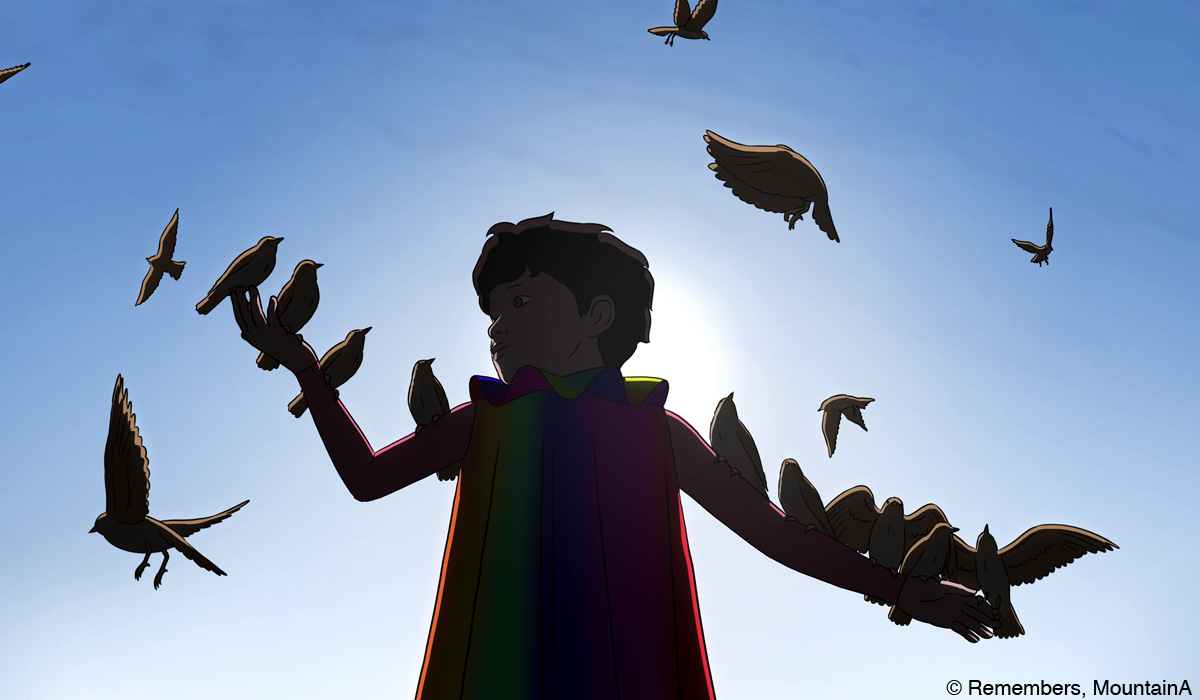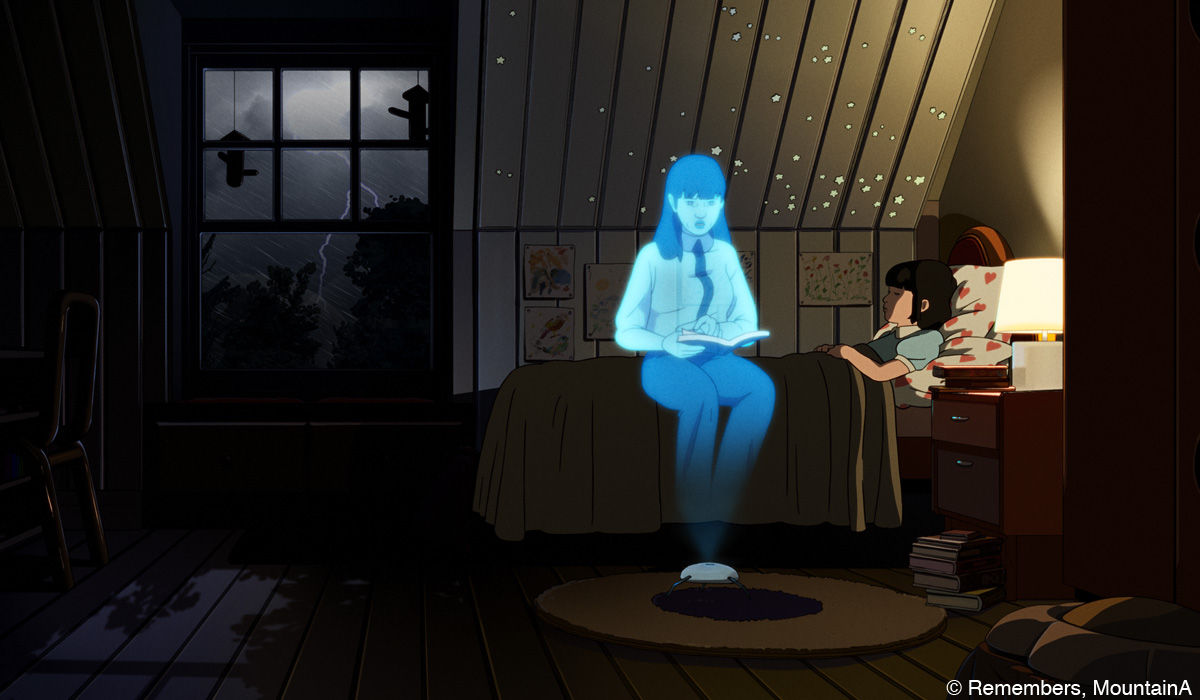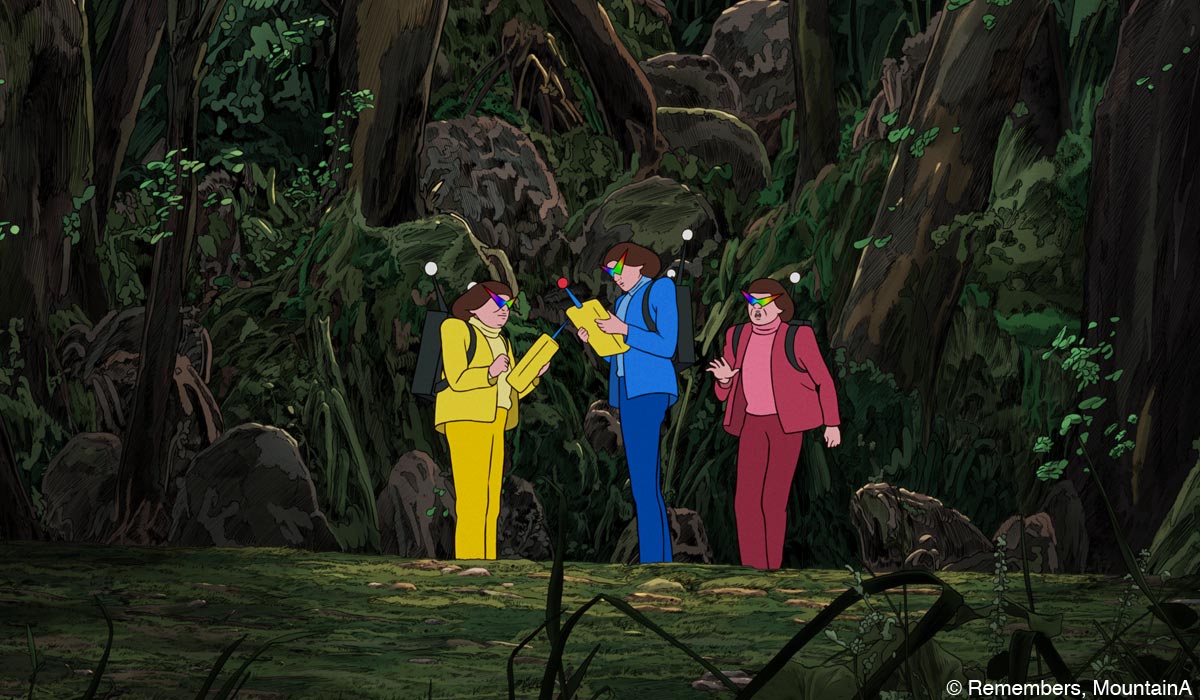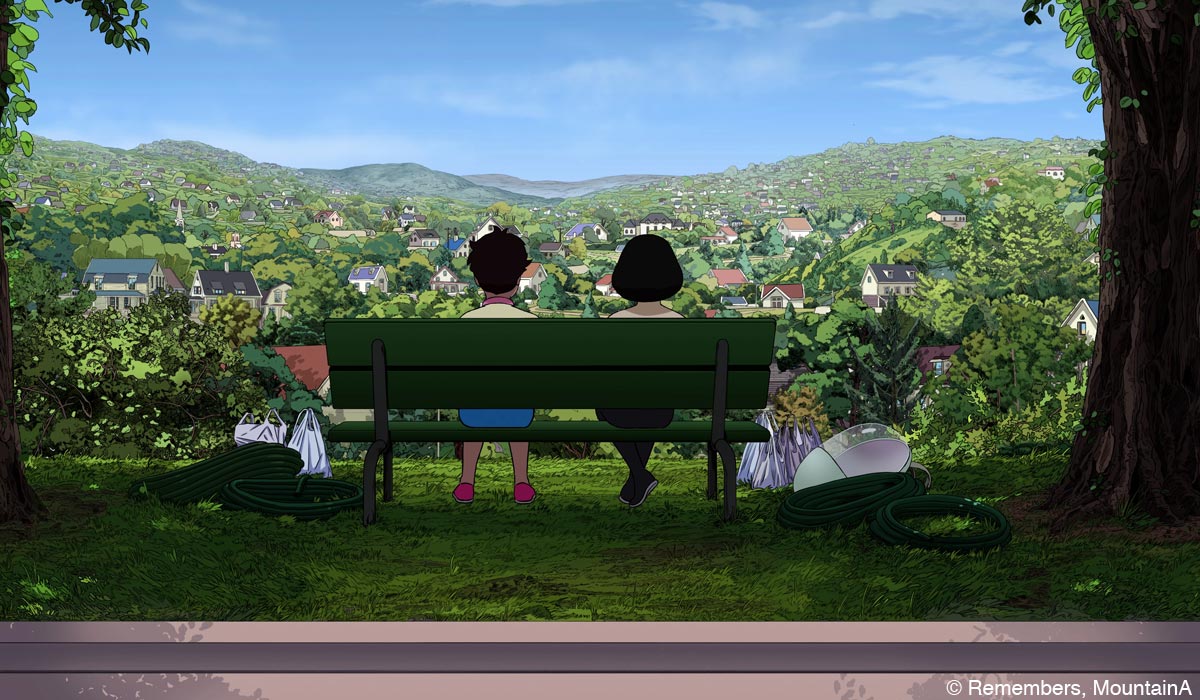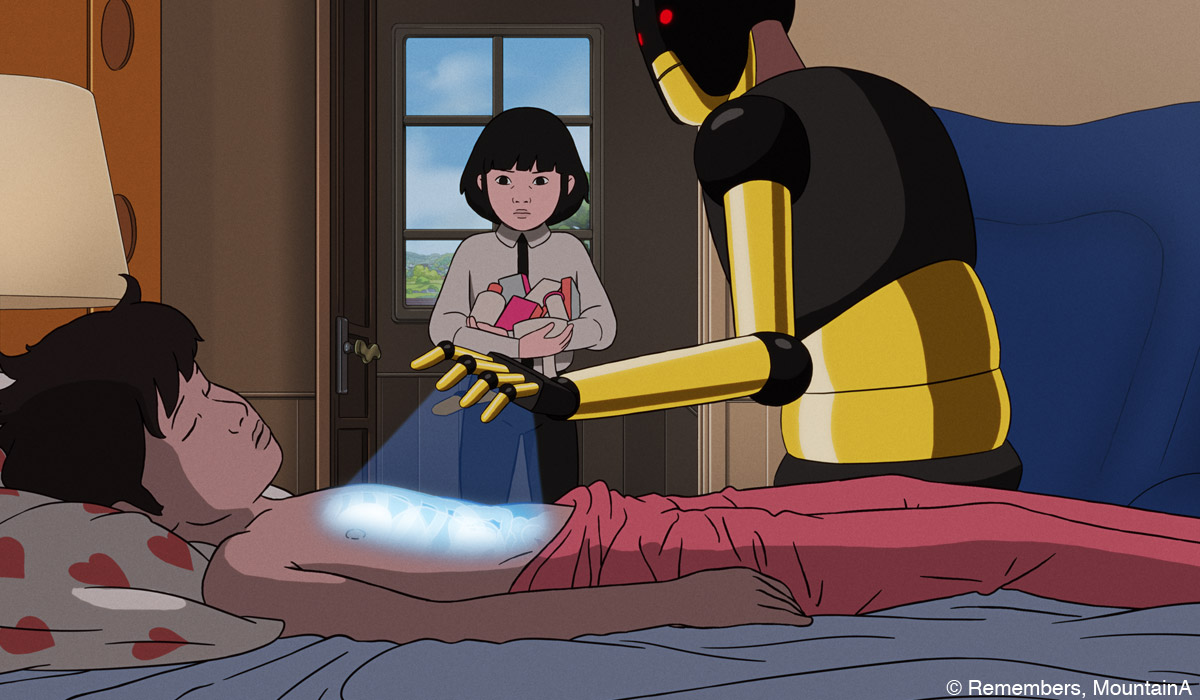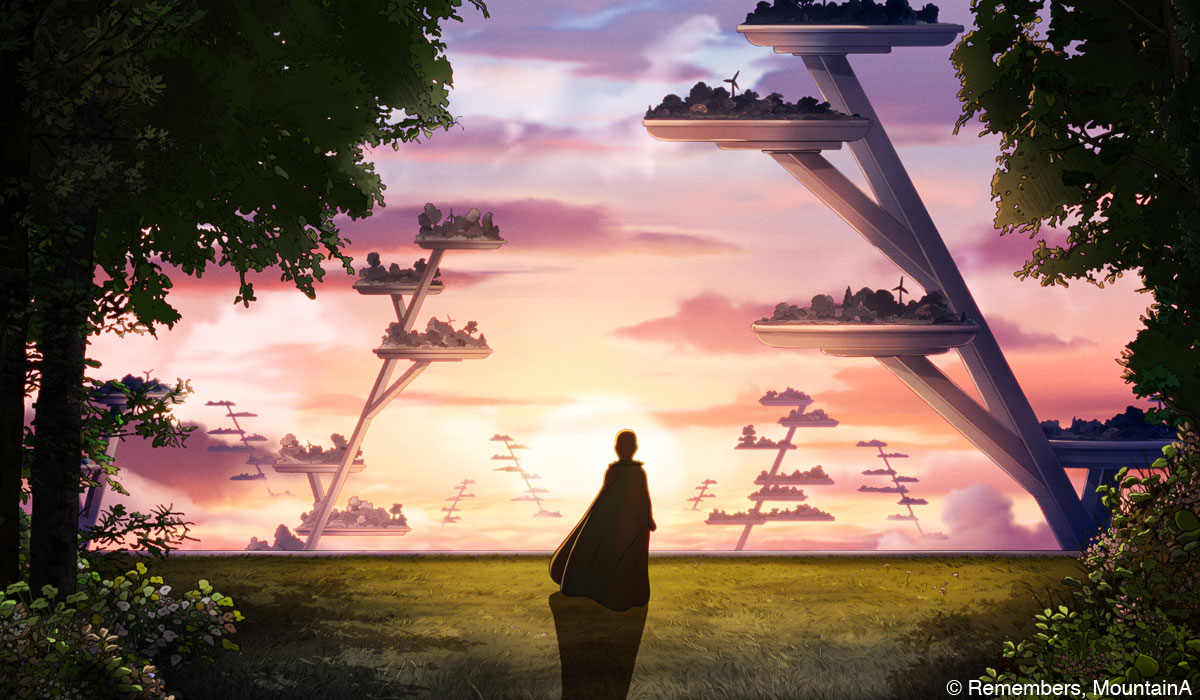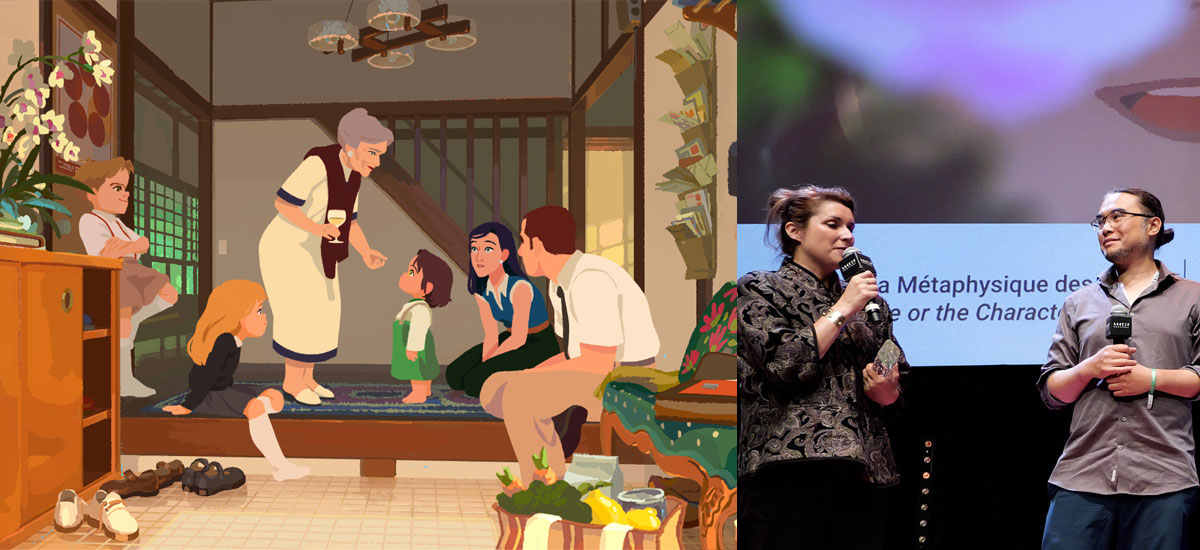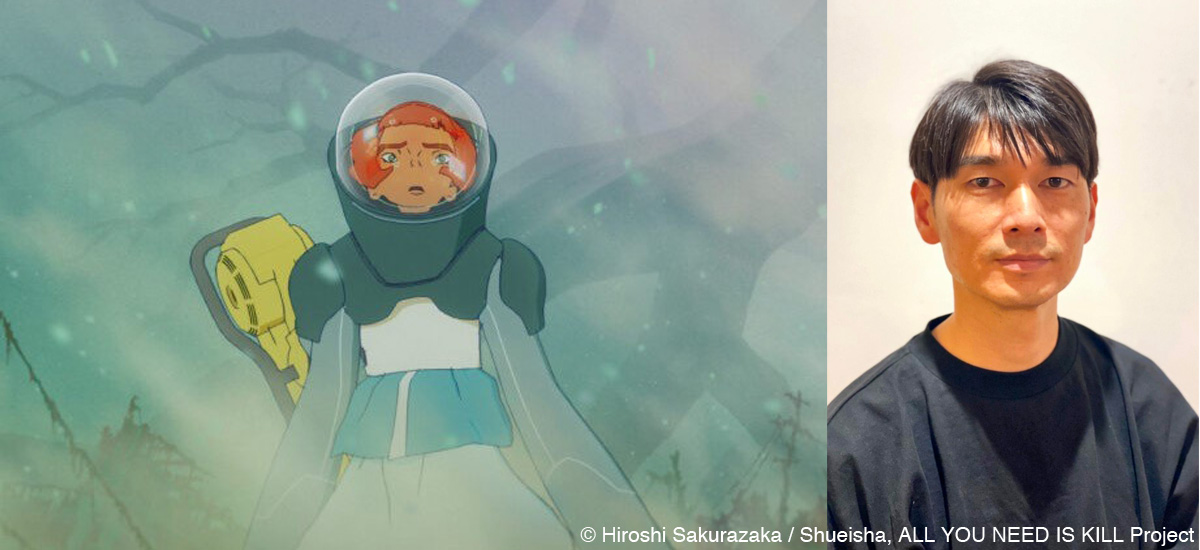“Arco”
Synopsis
Imagine if rainbows were actually time travellers? 10-year-old Arco lives in the distant future. During his first flight in his rainbow suit, he goes off course, loses control, and lands in our near future. Iris, a little girl who’s the same age as Arco, sees him fall from the sky. She will do everything she possibly can to help him go back home.
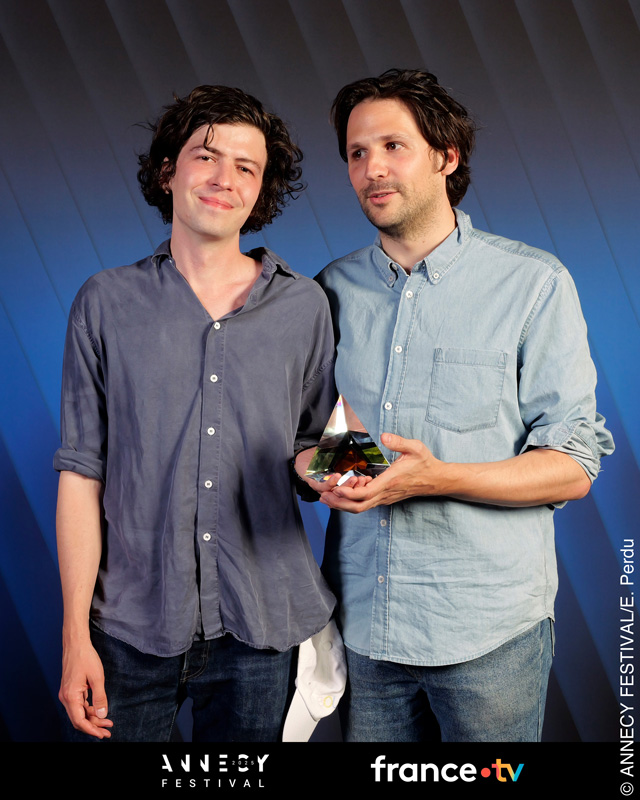
Film credits
Director: Ugo Bienvenu
Authors: Ugo Bienvenu and Félix de Givry
Producers: Félix de Givry (Remembers), Sophie Mas (MountainA), and Natalie Portman (MountainA), Ugo Bienvenu
Music: Arnaud Toulon
Technique: 2D digital
Running time: 82 minutes
Arco is a beautiful 2D animated feature film that depicts a touching, pure juvenile adventure story. It takes us to a future world that offers thoughtful insights into some of the implications in the present human world. This marks the first animated feature film for both its director, Ugo Bienvenu, and for Remembers, the French animation studio and production company he co-founded with Félix de Givry.
The film premiered in the Special Screenings section at the Cannes Film Festival 2025 and won the Cristal of the Official Feature Films Competition at the Annecy International Animation Film Festival 2025.
We interviewed Ugo Bienvenu, the director and author, on the story behind the film’s creation.
Interview with Ugo Bienvenu
Hideki Nagaishi (HN): What aspects of the film do you think are most appealing to global audiences?
Ugo Bienvenu: I don’t know if I’m the right person to answer that question, but what I can say is that I tried to make a film that children would like and their parents too. I wanted to create an adventure movie, like the ones I liked and that forged my unconscious when I was a kid. A movie where sensations and emotions would be the heart of everything.
HN: Is there a particular message or experience you would like to deliver to the audience through the film’s story?
Ugo Bienvenu: I think the most important message in the movie is to give credit to the small things, to the fragile ideas. Our goal was to say this simple thing: “It is not because ideas and things look weak or small that they can’t be big in the end, produce big changes, big movements.” There are a lot of other questions asked in the movie that, to me, are important, for example: “what are we ready to lose of our humanity for progress?” or “Is illusion comparable to the experience of reality?” I think these are going to be the questions that we and our kids will face in the next decade, and fiction, to me, is here to help us find our way in what is coming ahead.
HN: Where did the initial idea for the film’s story come from? And why and how did you decide to develop an animated feature film of the story?
Ugo Bienvenu: As usual, my ideas come from my sketchbooks. I drew a little face coming out of the sky with a rainbow trail behind it. I sent it to Félix, my partner at Remembers, as I usually do with a small pitch of what the story could be, and he told me “This is a feature film!” As I’m an animation director, the fact that it could be something other than animation has never been on the table. I direct animation movies because animation made me. I mean all the movies I like the most, all the movies that changed me, were animated.
HN: What did you take most care in when you were writing the film’s story? And were there any creative challenges during your journey of story development?
Ugo Bienvenu: Félix, my co-writer, and I were really focused on emotions. We also deeply wanted to share, in a way, the experiences of Iris and Arco. What I mean by that is that we wanted to feel what it could be like to fall in the sky, to fly, to live with robots, to meet a boy fell from the Sky, etc. It was all about trying to produce the best catharsis possible.
The main challenge was to stick to kids’ height, to their games and imagination, while they were stuck in a rigid, adult-made world, with all it implies.
HN: The film’s story is depicted with beautifully delicate and nostalgic animated visuals. What were your primary aims and considerations for the film’s visual direction?
Ugo Bienvenu: The main aim was to keep my graphical style (the one I’ve developed for 15 years through my short movies, music videos, animated commercials, illustrations, comic books, and other things) on a wider scale, and to be able to conserve its DNA with more than a hundred persons working on it. One of the main issues was to add as much depth as we could to my images as we kept the line in the backgrounds. My style was also a little bit too realistic, and I wanted it a little bit more “roundy,” smoother than previously in my work.
HN: Could you please tell us the story behind the music creation for the film, such as your primary aims and how you achieved those aims through collaboration with the music composer Arnaud Toulon?
Ugo Bienvenu: Arnaud Toulon and I’ve been close friends for many years now, and he’s done almost all the music for what we produce at Remembers. He is the second person I talked to about Arco after Félix; he’s been here since the very beginning. What I first told him was, “You’ll be in charge of the metaphysical aspect of the movie!” During the writing and preproduction process, Arnaud was sending me compositions he was doing based on the words and images we were sending him. Then when we began the animatic, he got more precise. He composed almost until the days of recording. I also remember he made me realize what I hadn’t understood about a scene I wrote. At first, I wanted victory music for this scene, but he decided to do a dramatic one, and it gave all the depth that we were searching for. Arnaud sometimes helps me understand what I do.
HN: Could you please let us know the story of the film project’s business side? How did it begin, what difficulties did you face, and what was the turning point that led to its realization?
Ugo Bienvenu: We began in our Studio Remembers. The main difficulty was that we had never done a project of this scale before, and people are a bit scared of that, which is logical. Honestly, there have been a lot of obstacles, tons of them, as for every big project, I guess, but it was so important for Félix and I that we were always finding new ideas, new ways of dealing with reality. That’s what I discovered: you have to be as imaginative with financing as you are writing the script and drawing the images! A French poet once wrote, “Que de choses il faut ignorer pour agir,” which means “How many things one must ignore in order to act.” This sentence has been rolling in my head for five years. But the turning point was when Félix and I, realizing that nobody understood the script as we wanted, decided to use our economies to finance and do the full animatic of the movie, so everybody could see and feel what we had in mind.



